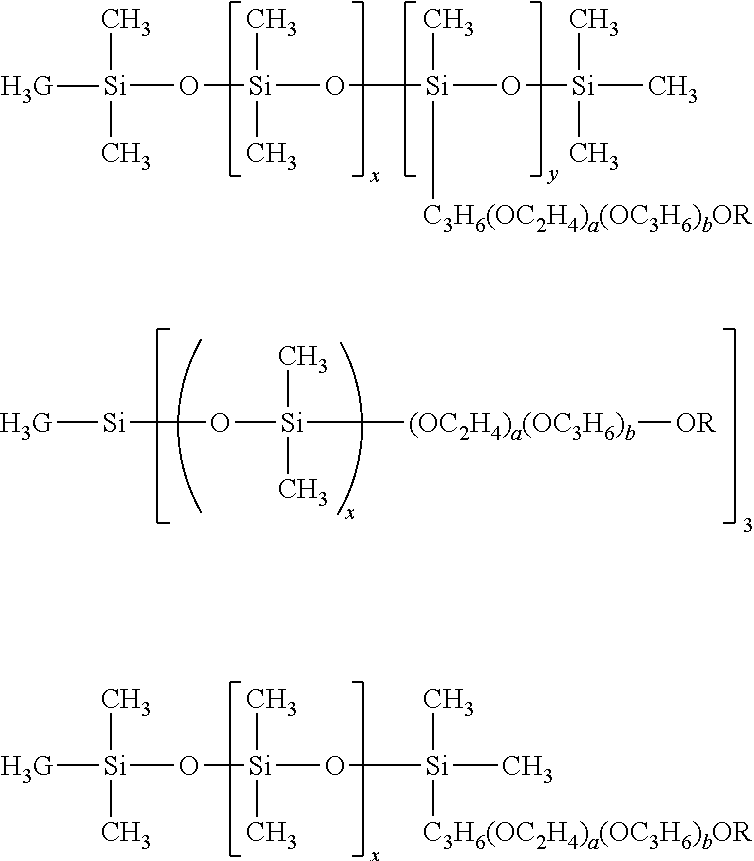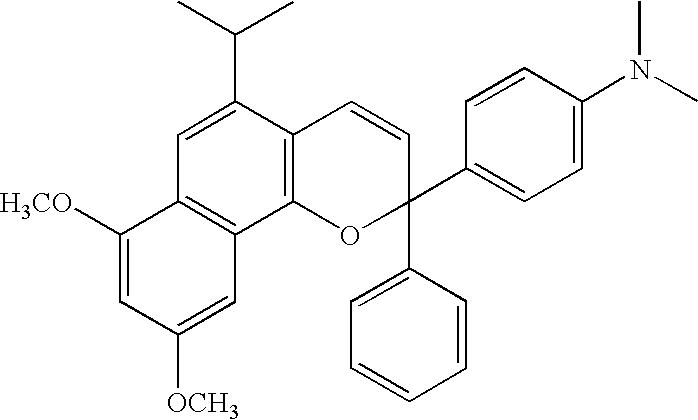Layered product, optical part, processes for producing these, and coating fluid
a technology of optical parts and coating fluid, applied in the field of laminated products, can solve the problems of unsatisfactory wetting properties, limited usable time, and limited adhesion of the above photochromic coating agent, and achieve the effects of improving impact resistance, high impact resistance, and not deteriorating optical characteristics
- Summary
- Abstract
- Description
- Claims
- Application Information
AI Technical Summary
Benefits of technology
Problems solved by technology
Method used
Image
Examples
example 1
[0104]CR39 (allyl resin plastic lens; refractive index=1.50) was used as a lens base material, and this lens base material was sufficiently degreased by acetone. A humidity-curing type primer “Takenate M-605N” manufactured by Mitsui Takeda Chemical Co., Ltd. as a primer and butyl acetate were blended in a weight ratio of 1:1 and sufficiently stirred under nitrogen atmosphere until the mixture was homogenized. The above primer had an isocyanate group content of 2.4 mole % which was determined by an amine equivalent method. This was spin-coated by means of a spin coater 1H-DX2 manufactured by MIKASA Co., Ltd. This coat was cured at 110° C. for one hour in a constant temperature device to prepare a lens base material having a primer layer. The surface thereof was subjected to treatment as pre-treatment for the lens base material by means of a corona treating apparatus MultiDyne manufactured by Navitas Co., Ltd. in order to prepare a photochromic cured film. As for a photochromic polyme...
example 2
[0120]A photochromic cured film was prepared by the same method as in Example 1, except that a humidity-curing type primer “Takenate M-402P” manufactured by Mitsui Takeda Chemical Co., Ltd. was used as a primer, and the appearance and the adhesion thereof were evaluated. The above primer had an isocyanate group content of 2.6 mole %. The results thereof are summarized in Table 1.
example 3
[0121]A photochromic cured film was prepared by the same method as in Example 1, except that a humidity-curing type primer “Takenate M-631N” manufactured by Mitsui Takeda Chemical Co., Ltd. was used as a primer, and this and butyl acetate were blended in a weight ratio of 1:2 and sufficiently stirred under nitrogen atmosphere until the mixture was homogenized and that 1 part by weight of a silicone base leveling agent “L-7001” manufactured by Nippon Unicar Co., Ltd. was added as a leveling agent and sufficiently stirred under nitrogen atmosphere until the mixture was homogenized. The appearance and the adhesion thereof were evaluated. The above primer had an isocyanate group content of 4.2 mole %. The results thereof are summarized in Table 1.
PUM
| Property | Measurement | Unit |
|---|---|---|
| boiling point | aaaaa | aaaaa |
| temperature | aaaaa | aaaaa |
| thickness | aaaaa | aaaaa |
Abstract
Description
Claims
Application Information
 Login to View More
Login to View More - R&D
- Intellectual Property
- Life Sciences
- Materials
- Tech Scout
- Unparalleled Data Quality
- Higher Quality Content
- 60% Fewer Hallucinations
Browse by: Latest US Patents, China's latest patents, Technical Efficacy Thesaurus, Application Domain, Technology Topic, Popular Technical Reports.
© 2025 PatSnap. All rights reserved.Legal|Privacy policy|Modern Slavery Act Transparency Statement|Sitemap|About US| Contact US: help@patsnap.com



